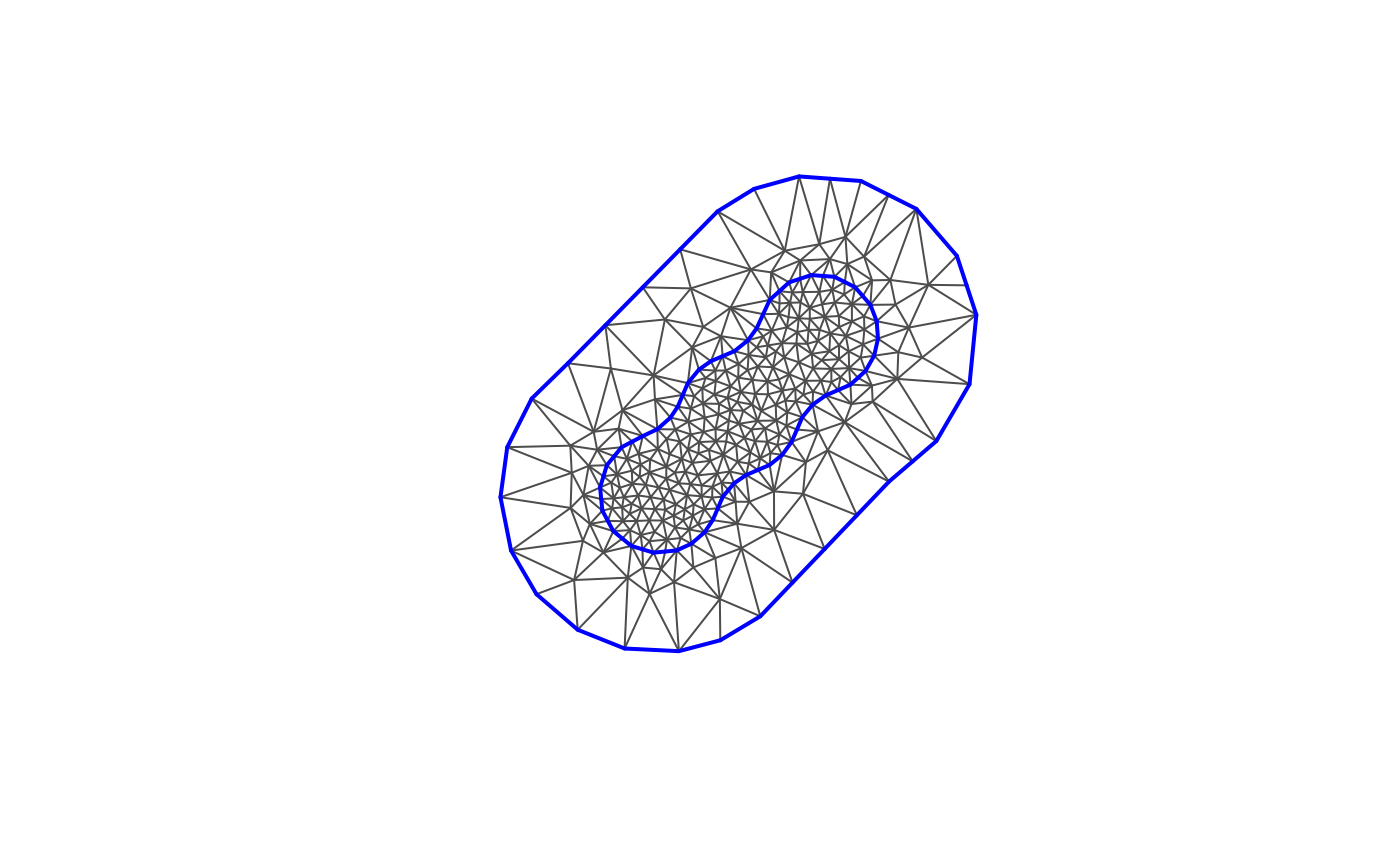Constructs a potentially nonconvex extension of a spatial object by
performing dilation by convex + concave followed by
erosion by concave. This is equivalent to dilation by convex followed
by closing (dilation + erosion) by concave.
Usage
fm_nonconvex_hull(x, ..., format = "sf", method = "fm")
fm_extensions(
x,
convex = -0.15,
concave = convex,
...,
format = "sf",
method = "fm"
)
fm_nonconvex_hull_fm(
x,
convex = -0.15,
concave = convex,
resolution = 40,
eps = NULL,
eps_rel = NULL,
crs = fm_crs(x),
...
)
fm_nonconvex_hull_sf(
x,
convex = -0.15,
concave = convex,
preserveTopology = TRUE,
dTolerance = NULL,
crs = fm_crs(x),
...
)
# S3 method for class 'sfc'
fm_nonconvex_hull(x, ..., format = "sf", method = "fm")
# S3 method for class 'matrix'
fm_nonconvex_hull(x, ..., format = "sf", method = "fm")
# S3 method for class 'sf'
fm_nonconvex_hull(x, ..., format = "sf", method = "fm")
# S3 method for class 'Spatial'
fm_nonconvex_hull(x, ..., format = "sf", method = "fm")
# S3 method for class 'sfg'
fm_nonconvex_hull(x, ..., format = "sf", method = "fm")
# S3 method for class 'fm_segm'
fm_nonconvex_hull(x, ..., format = "sf", method = "fm")
# S3 method for class 'fm_segm_list'
fm_nonconvex_hull(x, ..., format = "sf", method = "fm")Arguments
- x
A spatial object
- ...
Arguments passed on to the
fm_nonconvex_hull()sub-methods- format
character specifying the output format; "sf" (default) or "fm"
- method
character specifying the construction method; "fm" (default) or "sf"
- convex
numeric vector; How much to extend
- concave
numeric vector; The minimum allowed reentrant curvature. Default equal to
convex- resolution
integer; The internal computation resolution. A warning will be issued when this needs to be increased for higher accuracy, with the required resolution stated. For
method="fm"only.- eps, eps_rel
The polygonal curve simplification tolerances used for simplifying the resulting boundary curve. See
fm_simplify_helper()for details. Formethod="fm"only.- crs
Optional crs object for the resulting polygon. Default is
fm_crs(x)- preserveTopology
logical; argument to
sf::st_simplify()(formethod="sf"only)- dTolerance
If not zero, controls the
dToleranceargument tosf::st_simplify(). The default ispmin(convex, concave) / 40, chosen to give approximately 4 or more subsegments per circular quadrant. (formethod="sf"only)
Value
fm_nonconvex_hull() returns an extended object as an sfc polygon
object (if format = "sf") or an fm_segm object (if `format = "fm")
fm_extensions() returns a list of sfc objects.
Details
Morphological dilation by convex, followed by closing by
concave, with minimum concave curvature radius concave. If
the dilated set has no gaps of width between $$2 \textrm{convex}
(\sqrt{1+2\textrm{concave}/\textrm{convex}} - 1)
$$
and \(2\textrm{concave}\), then the minimum convex curvature
radius is convex.
The implementation is based on the identity $$\textrm{dilation}(a) \& \textrm{closing}(b) = \textrm{dilation}(a+b) \& \textrm{erosion}(b)$$ where all operations are with respect to disks with the specified radii.
When convex, concave, or dTolerance are negative,
fm_diameter * abs(...) is used instead.
Functions
fm_extensions(): Constructs a potentially nonconvex extension of a spatial object by performing dilation byconvex + concavefollowed by erosion byconcave. This is equivalent to dilation byconvexfollowed by closing (dilation + erosion) byconcave.The
...arguments are passed on tofm_nonconvex_hull_fm()orfm_nonconvex_hull_sf(), depending on themethodargument.fm_nonconvex_hull_fm():fmeshermethod forfm_nonconvex_hull(), which uses thesplancs::nndistF()function to compute nearest-neighbour distances.fm_nonconvex_hull_sf(): Differs fromsf::st_buffer(x, convex)followed bysf::st_concave_hull()(available from GEOS 3.11) in how the amount of allowed concavity is controlled.
INLA compatibility
For mesh and curve creation, the fm_rcdt_2d_inla(), fm_mesh_2d_inla(),
and fm_nonconvex_hull_inla() methods will keep the interface syntax used by
INLA::inla.mesh.create(), INLA::inla.mesh.2d(), and
INLA::inla.nonconvex.hull() functions, respectively, whereas the
fm_rcdt_2d(), fm_mesh_2d(), and fm_nonconvex_hull() interfaces may be
different, and potentially change in the future.
Examples
inp <- matrix(rnorm(20), 10, 2)
out <- fm_nonconvex_hull(inp, convex = 1, method = "sf")
plot(out)
points(inp, pch = 20)
out <- fm_nonconvex_hull(inp, convex = 1, method = "fm", format = "fm")
lines(out, col = 2, add = TRUE)
 if (TRUE) {
inp <- sf::st_as_sf(as.data.frame(matrix(1:6, 3, 2)), coords = 1:2)
bnd <- fm_extensions(inp, convex = c(0.75, 2))
plot(fm_mesh_2d(boundary = bnd, max.edge = c(0.25, 1)), asp = 1)
}
if (TRUE) {
inp <- sf::st_as_sf(as.data.frame(matrix(1:6, 3, 2)), coords = 1:2)
bnd <- fm_extensions(inp, convex = c(0.75, 2))
plot(fm_mesh_2d(boundary = bnd, max.edge = c(0.25, 1)), asp = 1)
}
